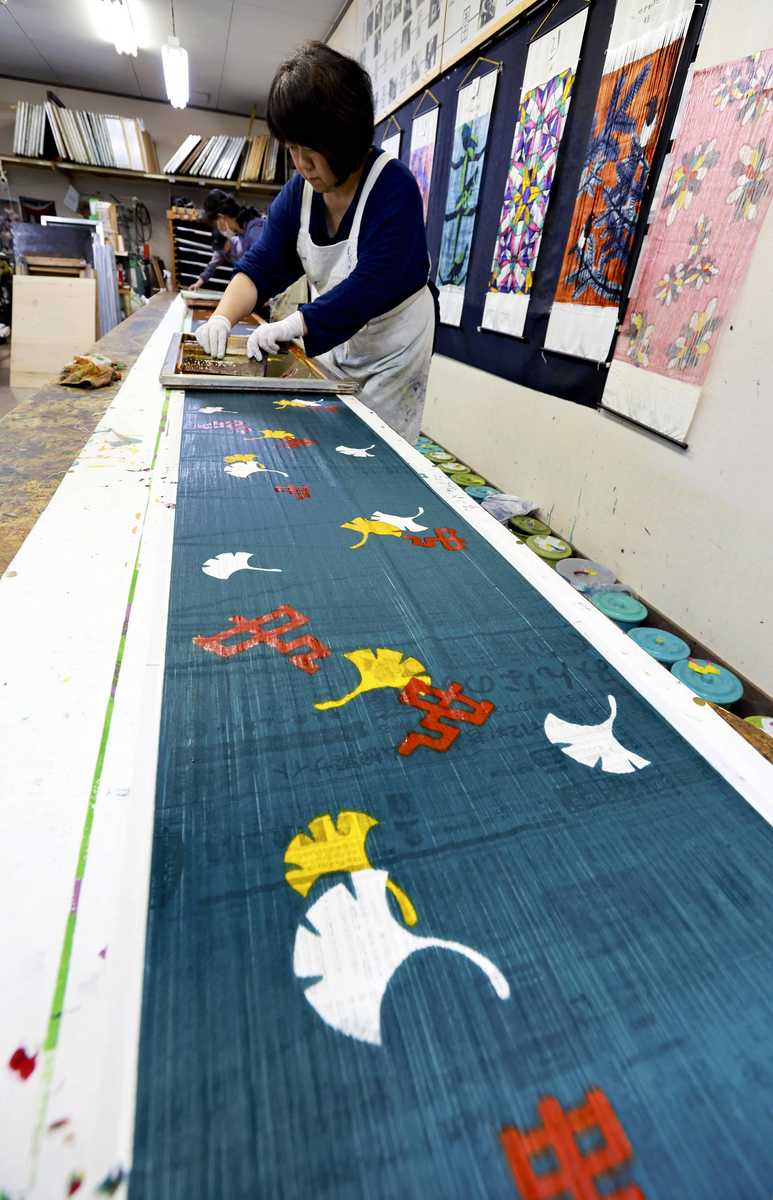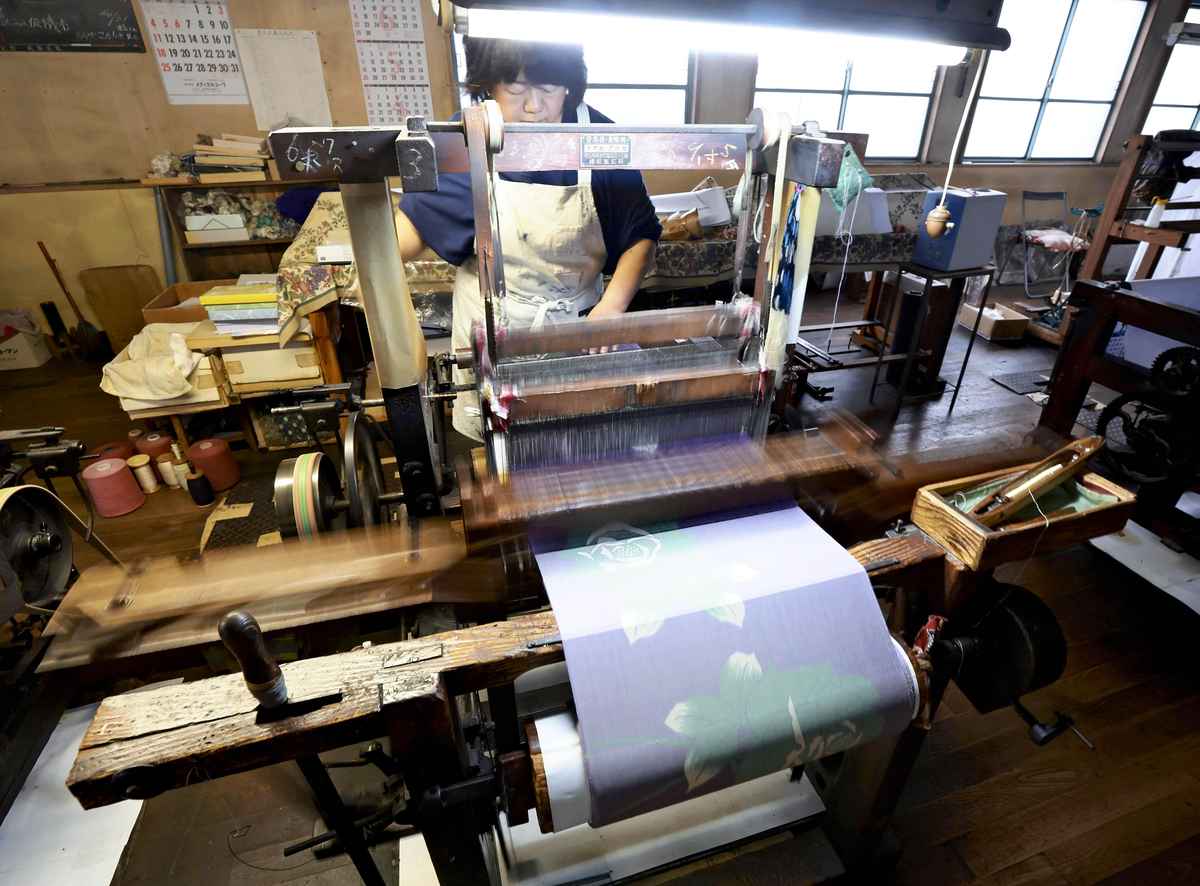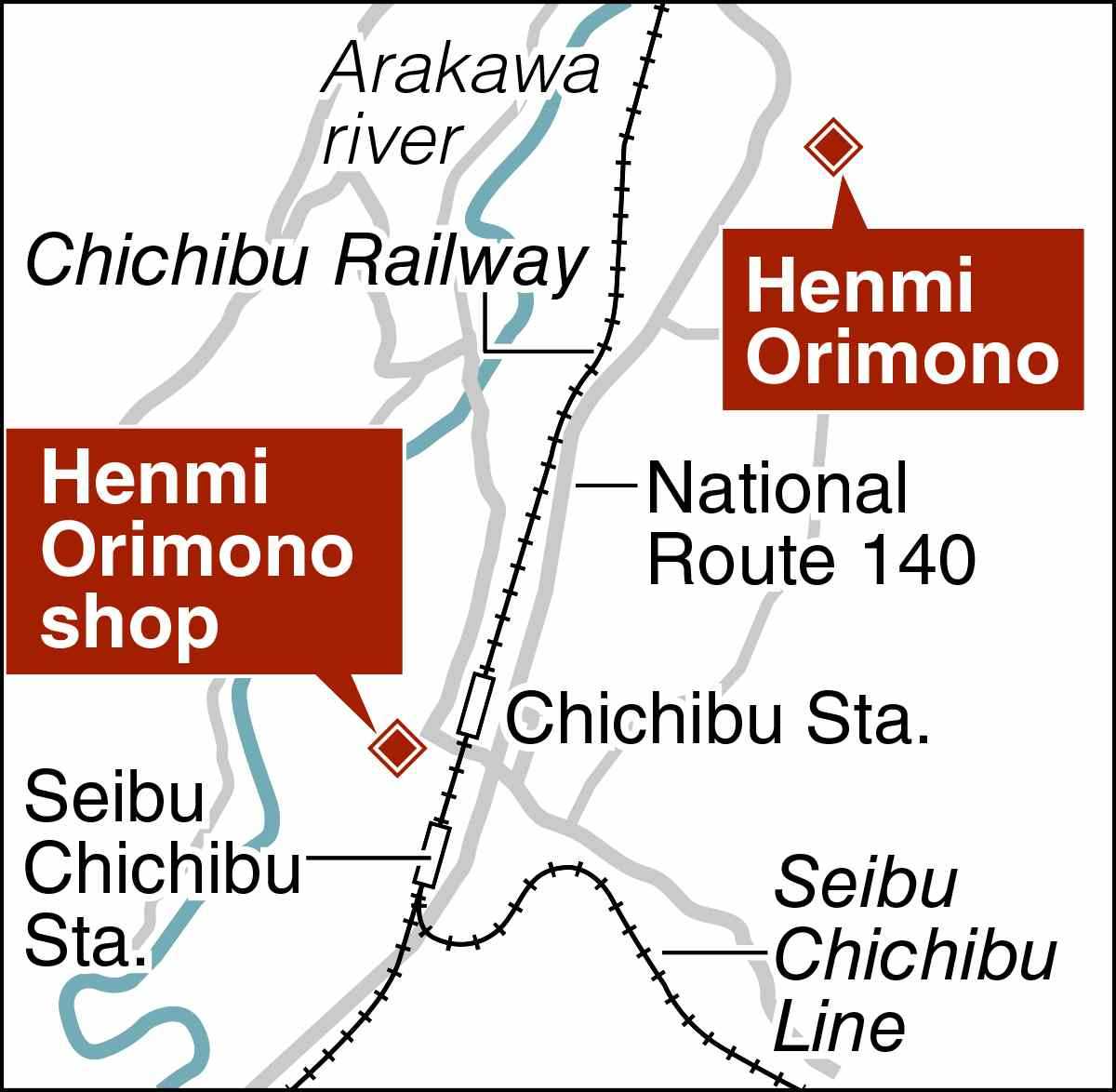July 15, 2025
CHICHIBU – On a day in late May, I visited a facility in central Chichibu, Saitama Prefecture, where guests can experience the production of woven silk fabrics. Artisans were working on stencil-dyeing white warp threads that had been temporarily woven together for the coloring process.
The workers pressed metal frames, bearing various patterned stencils, to the threads and then applied the dye, in a process similar to block-printing. The layering of several dyes produced colorful patterns on the fabric.

Kyoko Henmi dyes silk fabrics using a stencil at a facility where visitors can experience the fabric production process. PHOTO: THE YOMIURI SHIMBUN
Kyoko Henmi, 57, the third-generation owner of Henmi Orimono, a long-established textile production studio, was working with her artisans to make fabric that would be used in “osoroi tsumugi” kimonos. These garments are worn by the men who pull the gorgeous floats that feature in the Chichibu Yomatsuri (Chichibu night festival) every December.
The traditional techniques for making these fabrics have fed the community’s enthusiasm for making brand-new kimono for dozens of men every year for the festival.
Chichibu is located deep in the mountains. It has only a small amount of land suitable for growing rice, so its silk industry thrived for many years, starting in the Edo period (1603-1867).
Beginning in the early Meiji era (1868-1912), high-end silk thread was shipped off for export and other purposes, and locals produced everyday clothing using fabrics woven from lower-quality thread. This was the origin of the Chichibu Meisen style of fabrics.
These fabrics are made with a technique called “hogushi nassen,” in which warp threads are temporarily woven together and dyed using stencils. Because the threads, not the finished fabrics, are dyed, both the front and back sides have the same coloration. This makes it possible for the clothes to be worn for a long time, contributing to their popularity.

Henmi Orimono’s shop sells various kinds of goods made from Chichibu Meisen fabrics. PHOTO: THE YOMIURI SHIMBUN
The finished fabrics are colorful, with cute designs, and they have been praised for their iridescent look, as the colors seem to shift based on the angle from which they are viewed.
However, the number of studios that produce these fabrics, which was in the hundreds in the latter half of the Showa era (1926-1989), has since dwindled. They have gone out of business one after another as Western-style clothes and synthetic textiles have become more widespread.
Henmi Orimono was established in 1927 by Kyoko’s grandfather, Tadashige. When she was around 20, she was hoping to become a hairdresser. But Tadashige, who was then bed-ridden due to an illness, told her, “I want you to prevent the tradition from dying out.” So she decided to take over the family business.

An automatic loom makes a loud noise as it weaves fabric. PHOTO: THE YOMIURI SHIMBUN
The automatic looms in her studio have been in use since around World War II. The machines make a lot of noise as they weave woof threads into fabrics. Patterns produced by the machines vary from traditional floral and geometric ones to those designed by younger craftsmen on their computers.
Kyoko is undertaking efforts to make bags and various other items with the fabrics, seeking ways to expand their range of uses.
“I want to pass on what is good about Chichibu Meisen to future generations in various ways,” she said.
Henmi Orimono

MAP: THE YOMIURI SHIMBUN
Address: 1463 Kuroya, Chichibu, Saitama Prefecture. Goods from the studio are available at a shop on the first floor of Chichibu Furusato-kan hall, located at 3-1 Motomachi in the city.
Access: The shop is a five-minute walk from Chichibu Station on the Chichibu Railway Line or a 15-minute walk from Seibu-Chichibu Station.
Hours: The shop is open from 10 a.m. to 4 p.m. Friday-Tuesday and is closed on Wednesday and Thursday.

